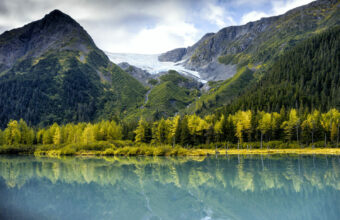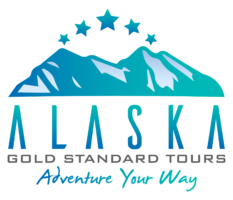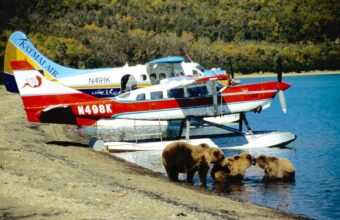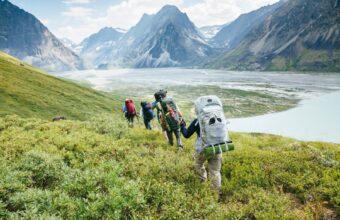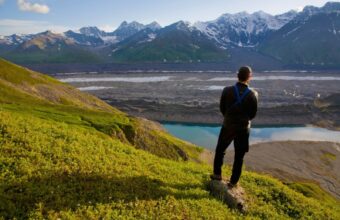How To Get To Lake Clark National Park
Essential guide to visiting Lake Clark national park
If you live in or near Anchorage and want a quick day of bear viewing, you head for Lake Clark National Park and Preserve, which is just a short hour's flight away.
But you can see much more than bears here: Lake Clark is also famous for its volcanoes and Richard Proenneke's historic, hand-crafted cabin, and it's a popular destination for fly fishing and paddling, too.
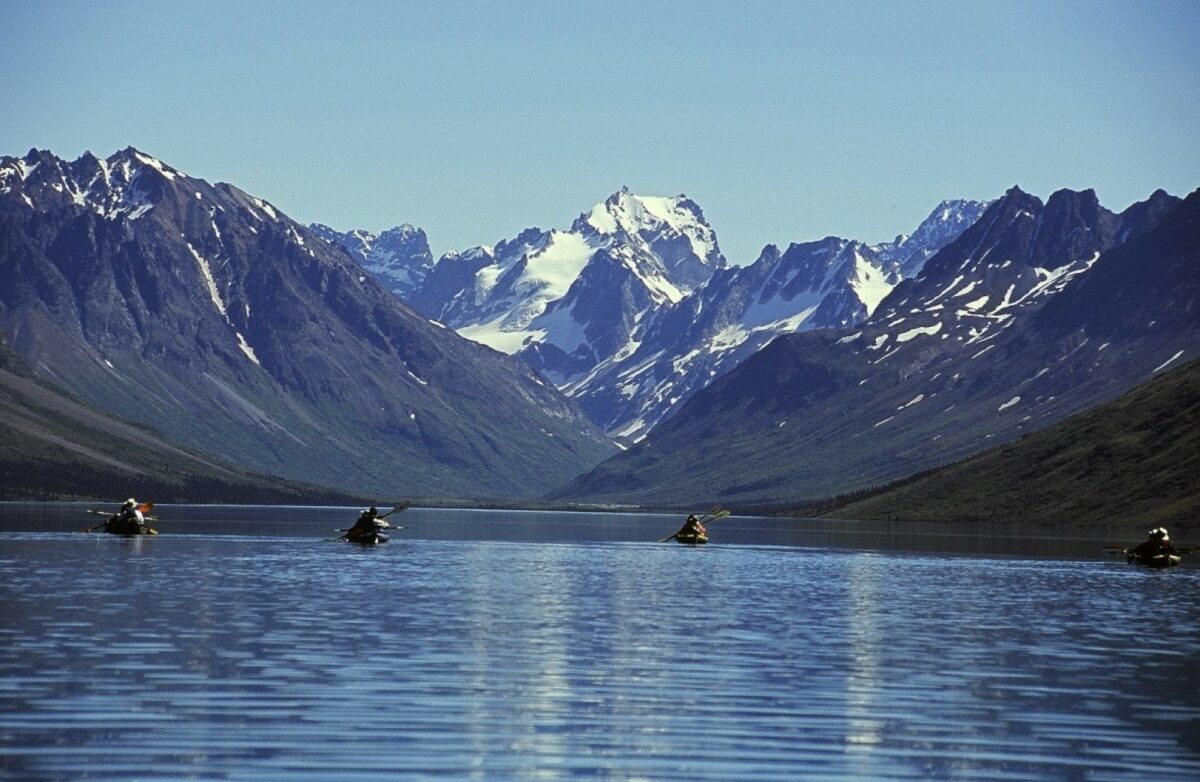
Kayaking on the Twin Lakes in Lake Clark National Park
How to get to Lake Clark National Park
Lake Clark National Park is located about 100 miles, or an hour's flight, southwest of Anchorage. Most visitors take a small plane from Anchorage to Port Alsworth, a community inside Lake Clark National Park. From there you can either explore on foot or, more commonly, take a small bush plane to other parts of the park.
The east side of the park (along Cook Inlet) can sometimes be accessed by boat, depending on the tides; companies based along the Kenai Peninsula sometimes offer coastline tours or pick up/drop off services.
Most people visit on an organised tour, in which flights, camping and guided activities are all included.
Recommended Tours
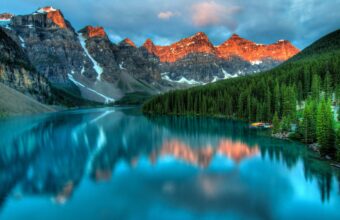
Turquoise to Twin Traverse – Lake Clark National Park
Backpack through the heart of Alaska’s wilderness in Lake Clark National Park
7 days From $3,795 pp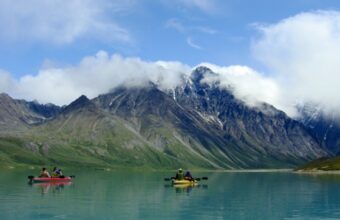
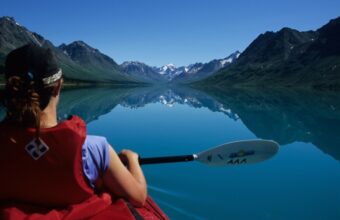
Things to do in Lake Clark National Park
Don’t miss the Upper Twin Lake cabin of Richard Proenneke, who became famous thanks to the book One Man's Wilderness and the documentary Alone in the Wilderness about his solitary life at Lake Clark. Proenneke built the cabin himself with self-made tools.
Bear-viewing along the coast is best from June through August, declining in September. Popular sites include Chinitna Bay, Crescent Lake, Silver Salmon Creek, and Shelter Creek/Tuxednia Bay.
This is a great place for birdwatching, with more than 185 documented species.
Fat tire biking is an increasingly popular way to explore frozen lakes and rivers during the winter.
Backpacking and base camp exploration is big here. The Twin Lakes area is one of the most popular backpacking areas.
Kayaking and canoeing are also popular; the Twin Lakes is a hot spot for this, as well as Turquoise Lake.
There is just one maintained hiking trail in the park: The Tanalian Trail system out of Port Alsworth, which leads about 4.1 miles one way to 3,900-foot Tanalian Mountain, or 2.5 miles one way to Kontrashibuna Lake.
Lake Clark boasts stellar fly fishing, including sockeye. Ice fishing is popular in the winter. Other species include the other four species of Pacific salmon, Arctic char and grayling, Dolly Varden and rainbow trout. Two of the most popular sites are Crescent Lake and Silver Salmon Creek.
A number of wilderness lodges are available to host bear viewing, fishing and hunting.
Lake Clark National Park travel tip
Lake Clark is Alaska’s great “all-rounder” adventure destination—explorable by foot, on water and on skis.
When to go to Lake Clark National Park
Colliding air masses from the Bering Sea and the Gulf of Alaska cause extremely variable weather around Lake Clark. Expect subarctic mountain weather that changes markedly according to elevation and terrain. Summer temperatures range from 10 C (50 F) to 18 C (65 F).
The coast is much wetter, averaging 40 to 80 inches of rainfall every year, two to three times what you'll see in the interior. Extremely strong winds are common here.
Winters are relatively mild along the coast. Average winter temperatures run between -17 C (1 F) and -5 C (22 F), while temps may sink as low as -40 C (-40 F) in inland portions of the park.
If possible plan your visit for when Lake Clark is free of ice (so float planes can land)—usually May through October, depending on conditions.
Wildlife in Lake Clark National Park
The park is poised at the juncture of three mountain ranges offering a diverse landscape including coastline, glaciers, glacial lakes, salmon-bearing rivers and active volcanoes draped with glaciers.
Common wildlife sightings include brown and black bears, moose, caribou, wolves and maybe lynx if you're lucky. This is an excellent place for birding.
Lake Clark National Park facts & figures
Lake Clark National Park and Preserve covers more than 4 million acres--about 2.6 million acres in the park, 1.4 million in the preserve.
The area was first protected as a National Monument in 1978 and later upgraded to a National Park in 1980.
Humans have used this area for at least 10,000 years; there are multiple archaeological sites in the park.
Lake Clark is an important centre for research on sockeye salmon, which are crucial to both the ecosystem and subsistence lifestyles in the area.
The Lake Clark area contains two active volcanoes: 10,197ft (3,108m) Mount Redoubt and 10,016ft (3,052m) Mount Iliamna.


